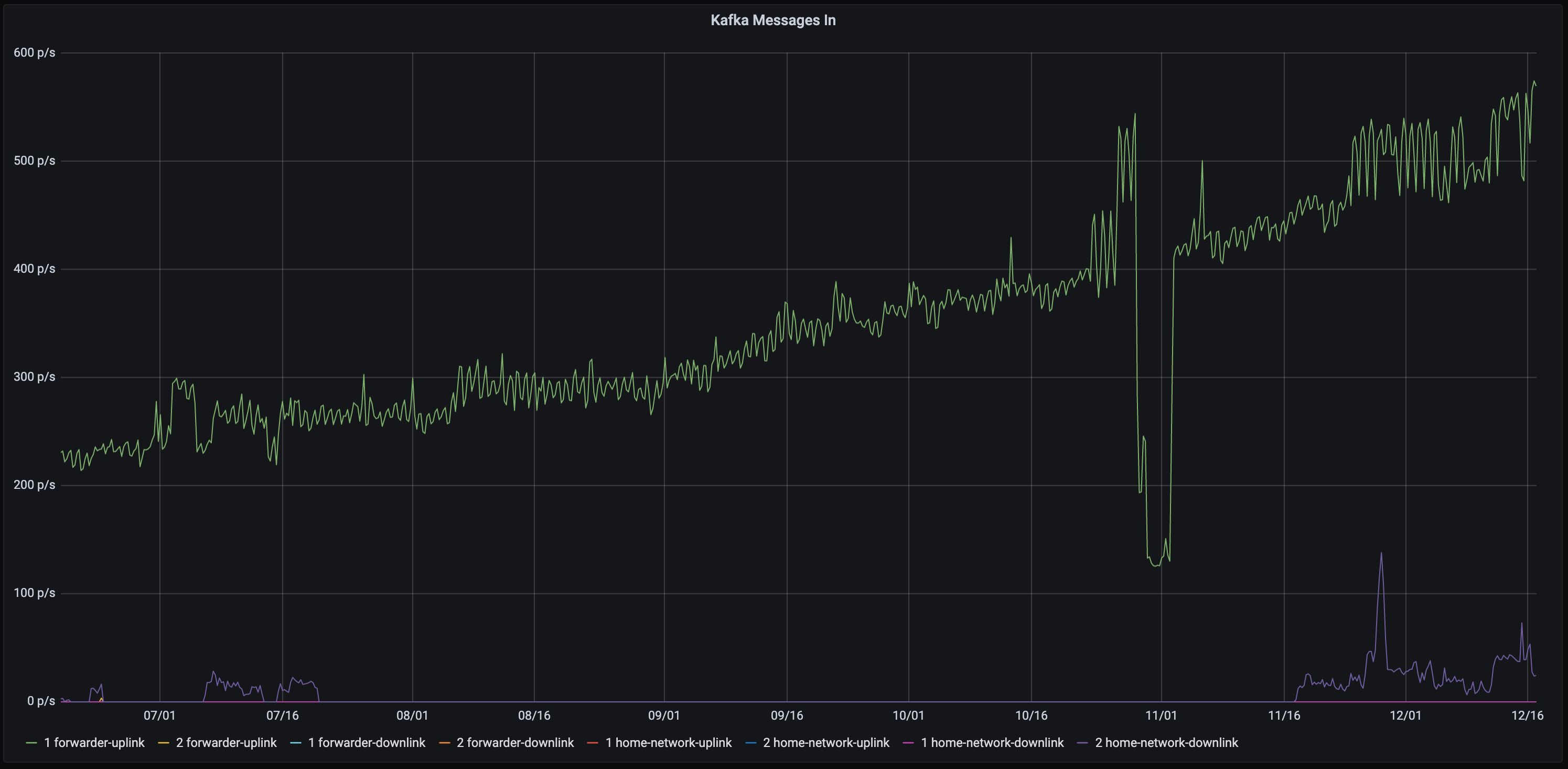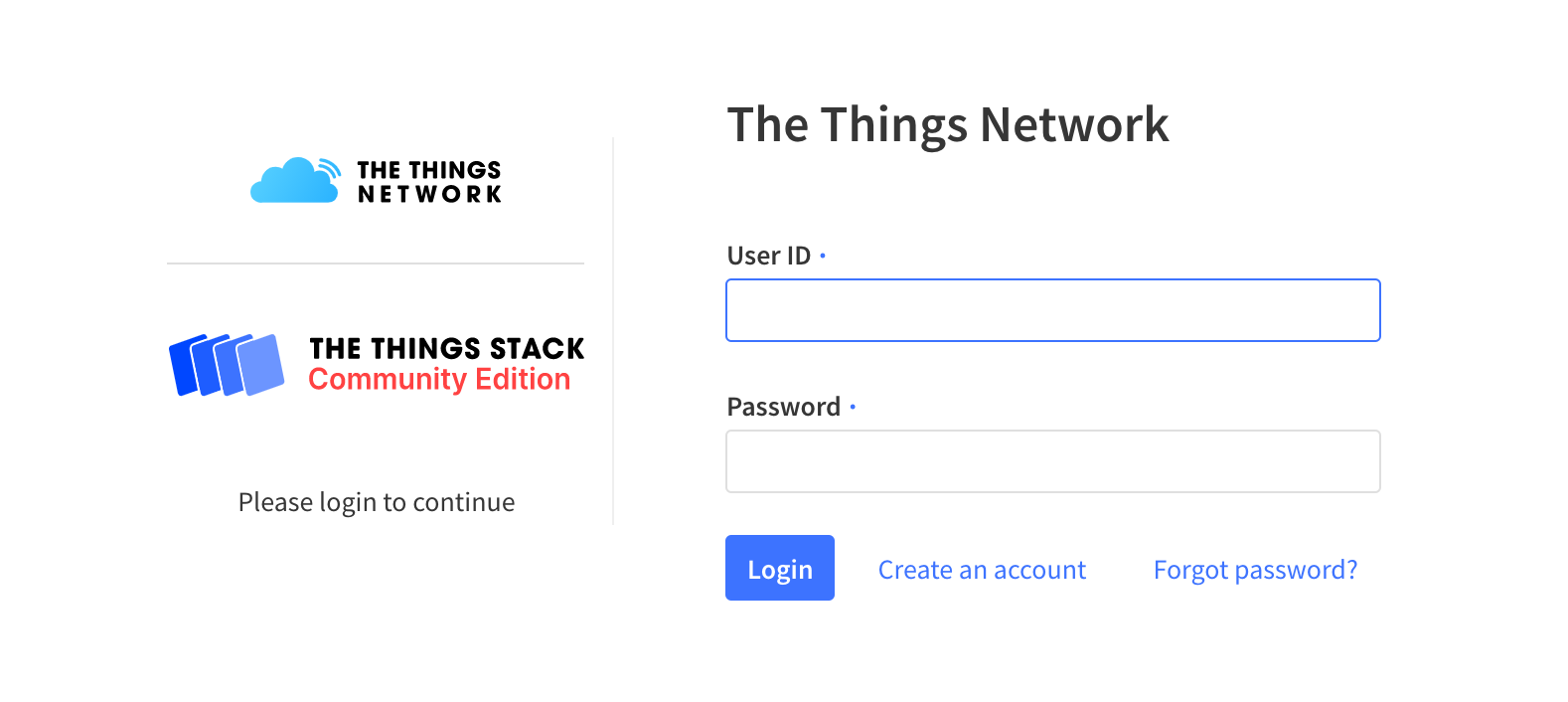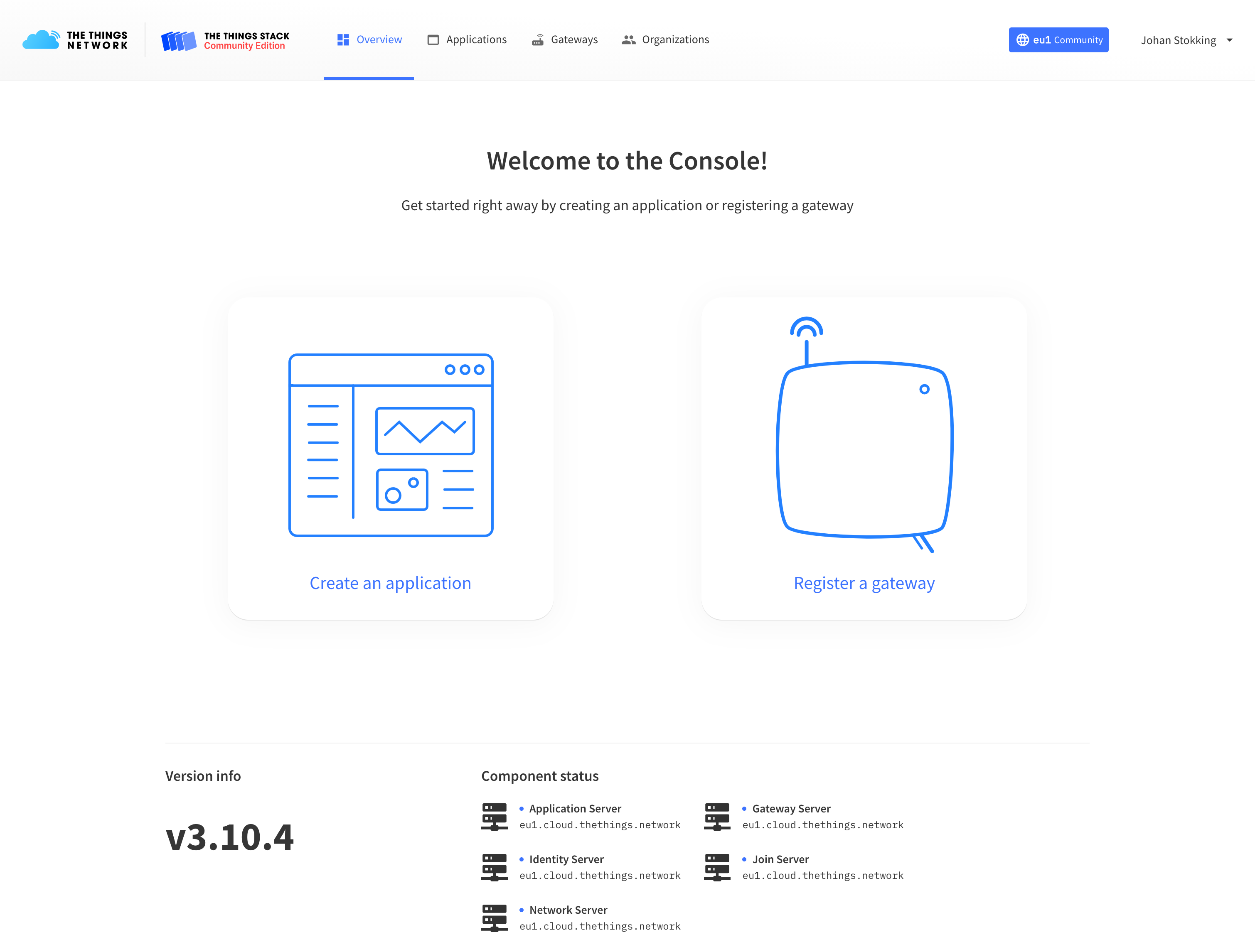Hi all! Hope you guys are doing well and are safe and healthy, wherever you are. Here in Amsterdam we’re just in a new lockdown that’s going to last for a while. It does give some extra time to focus on things that matter.
One of those things that matter is obviously making The Things Stack, known as V3, ready for the community to use. We’re already at stable version 3.10.4 and The Things Industries customers are already using The Things Stack for a while. It may sound strange, but making it available for the community is harder than for customers. That’s why it’s taking so long.
The main reason for this is scale. We’re seeing enormous increase of LoRaWAN packets globally over the past year. Here’s a chart of all LoRaWAN packets that Packet Broker received in the past 6 months (from TTN and TTI networks combined, globally, also traffic from other networks):

(yes, we had a massive outage there)
That basically doubled. That means that in a few months time, we’ll be hitting more than a thousand messages per second.
With quite a complex system like The Things Stack, we need to do quite some fine tuning and monitoring. We followed the “first make it run, then make it run fast” development approach, but we need to make it fast before we can start handling this amount of traffic. The commercial The Things Stack Cloud is also steadily handling increased volumes of traffic, so we’re getting more and more confident and we know better and better what to optimize where and when.
The only big feature that we need in order for the community to start using The Things Network powered by The Things Stack, is the single sign-on with the community account. Since this is currently handled by the V2 Account Server, part of the V2 Stack, we decided to build a new component, called The Things ID. Your username and password stay the same. We’ll be using The Things ID for more new fancy things that I cannot announce yet.
All traffic of The Things Network will be available in the clusters powered by The Things Stack. We’re using Packet Broker for that. This means that we’ll be operating V2 and V3 side-by-side. We also have migration tools ready to migrate devices (and their security session) to the new environment. At some point, we’ll announce a sunset period at which we shutdown V2. When that happens, we’ll put forwarders in place to keep data feeding into Packet Broker, for gateways that are still connected to the old endpoints.
We start with community cluster eu1 that’s operated professionally by the The Things Industries on behalf of The Things Network Foundation. We’ll follow a similar deployment model as with V2 (i.e. US and Asia). I’m already having serious conversations with different communities to operate The Things Stack community clusters too, including UK, Eastern Europe, Australia, South Africa and India.
You can already find documentation on The Things Stack at https://thethingsindustries.com/docs. What’s particularly interesting is https://www.thethingsindustries.com/docs/getting-started/migrating/major-changes/ and the migration guides.
To keep you warm, here are some screenshots.
Login screen:

Console landing page:

Feel free to ask any questions, I’ll be around to answer them.